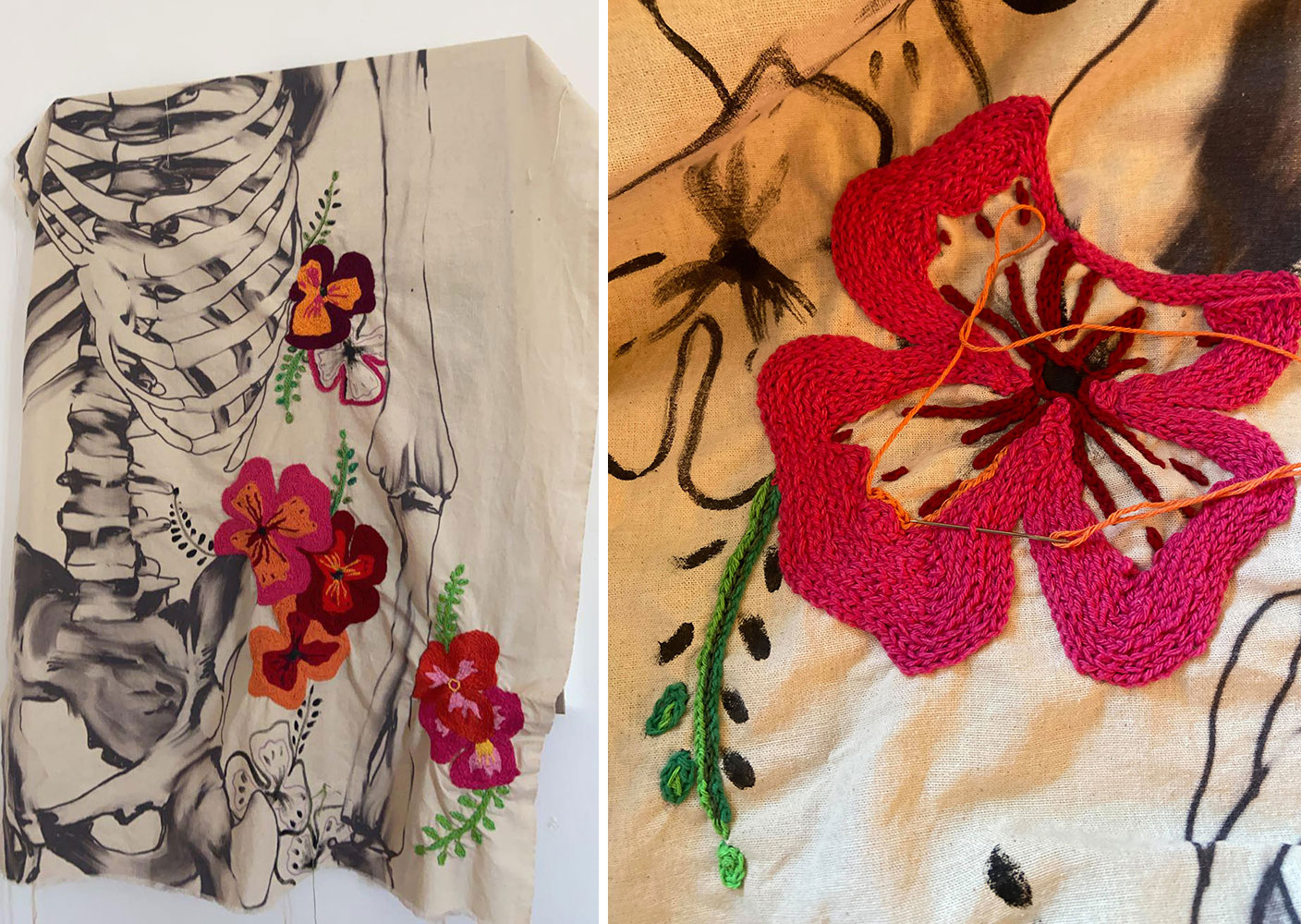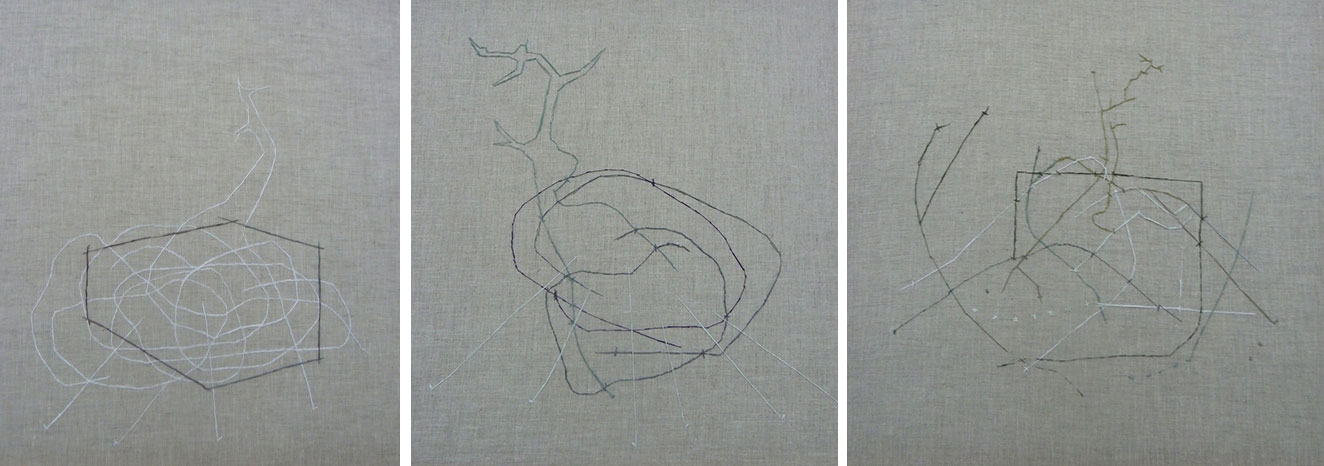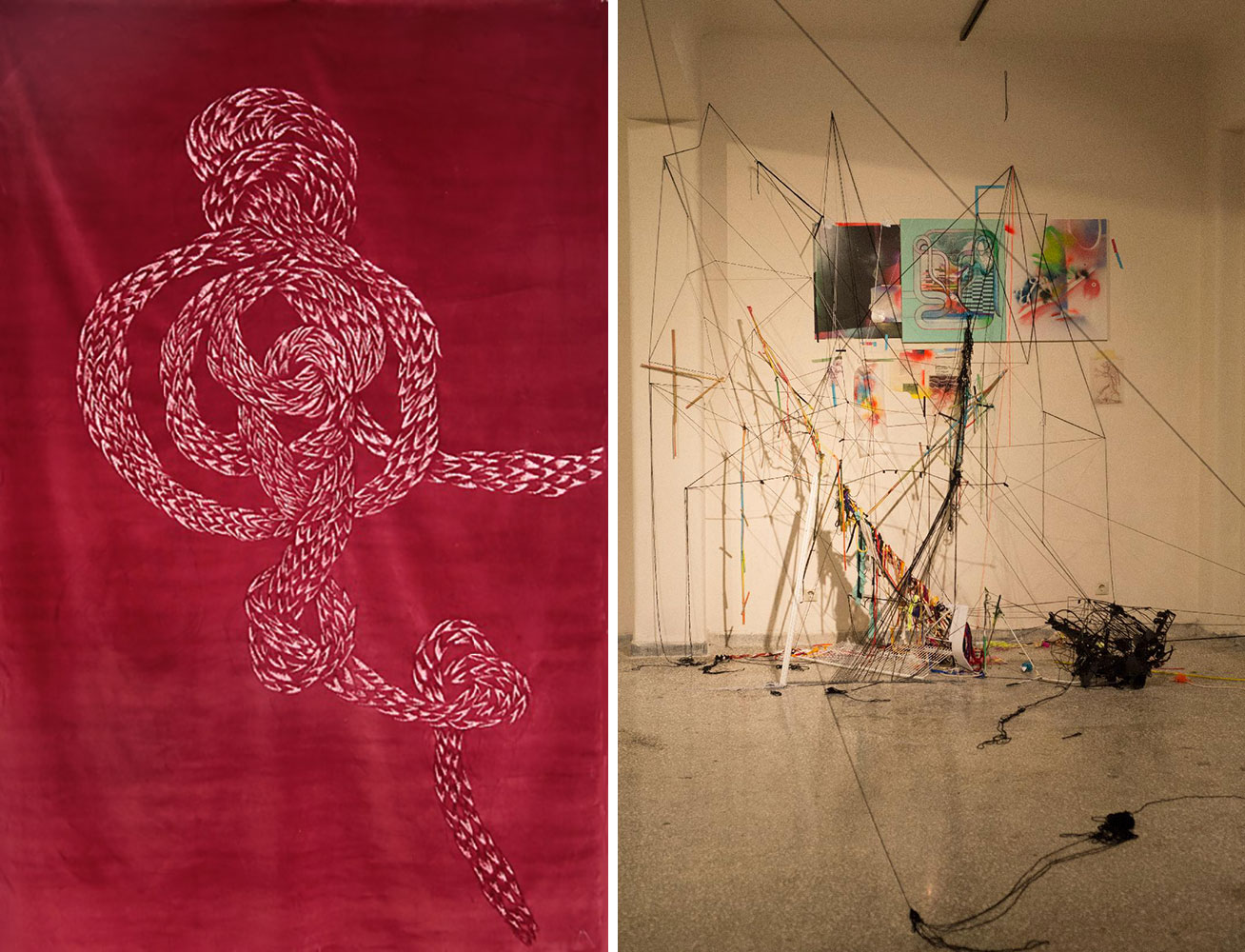PRESENTATION: Weaving The Future III (Shkodër), Part II
 The group exhibition “Weaving the Future Part III”, that is on view at the Galeria e Arteve Shkodër in Shkodra, Albania is organized by the dreamideamachine AMKE. The series of the exhibition “’Weaving the Future” (2019-ongoing) is a project-work in progress based in the concept of the Art Critic and Curator, Efi Michalrou and focuses on feminine nature and creativity. This presentation will be I three parts, focusing in the work of each artist separately (Part I).
The group exhibition “Weaving the Future Part III”, that is on view at the Galeria e Arteve Shkodër in Shkodra, Albania is organized by the dreamideamachine AMKE. The series of the exhibition “’Weaving the Future” (2019-ongoing) is a project-work in progress based in the concept of the Art Critic and Curator, Efi Michalrou and focuses on feminine nature and creativity. This presentation will be I three parts, focusing in the work of each artist separately (Part I).
By Dimitris Lempesis
Photo: Archive of the Artists & Dimitris Lempesis
Before the women’s movement in the 60’s and 70’s, most women’s art was denied the title “fine art” because the techniques they used and the work they created was marginalized and devalued by the male-dominated art world. A hierarchy of the arts developed and was maintained by a common opinion that these decorative forms are less intellectually involved and serve only domestic and aesthetic needs. The 35 women artist that participate in “Weaving the Future III”, are using different means of expression such as: painting, sculpture, installations, photography, video and performance, denaturing traditional methods and techniques such as: embroidery, loom, knitting, sewing, wool, canvas, yarn and fabric, with a new way, mutating and transforming them into contemporary sculptures, paintings and installations. The noticeable characteristic of the project is that functions as a living laboratory of constantly evolving ideas. “Weaving the Future” started on June 2021 in Athens with the participation of 20 women artists, then “Weaving The Future II” is on presentation at unicipal Gallery-G.I. Katsigras Museum in Larissa that will be on view till October 31, 2021, renewed and enriched with new works by 29 artists. Now “Weaving the Future” travels to the Galeria e Arteve Shkodër in Shkodra, in parallel with the exhibition in Larissa, with artworks by 35 female artists that coexist harmoniously with each other and with the space, integrated in a new very interesting dialogue with the viewer.
In “Psychograph”, Evdokia Kyrkou prints and processes her photos of her from a cardiogram using thread as a type of writing. The thread plays a crucial role in her artwork because she is preoccupied with the idea of Life-the Thread of Life. He artwork functions as a carrier of stories that are transformed into fields of memory, which depending on the experiences of each viewer can be read as psychographs. In this series of works Aikaterini Kanakaki, after the death of her grandmother, through dreams the artist experiences a deep metaphysical relationship with her that stems from the deep relationship between them and love, so she chooses the skeleton as the most appropriate form, which leads her to the hope and belief of reincarnation with the deposited flowers acting not as decorations , but a preparation for this transformation. Marigo Kassi equates her series of works to “rags”, as women used to put pieces of cloth together to make patchworks and she explains “No one can imagine how durable this very thin paper is, how much hassle it can withstand. A treatment like torture”, in her works, paper through this whole process, refers to the body, to human endurance and patience. The violent process of tearing and sewing it, the wound that is healed and is recreated, strangely ends from an inner need, in joy and exaltation of soul. Having lived and shaped artistically in two worlds, between East and West, but as a genuine Greek, Maria-Marika Koenig, composes in her work, women’s history through objects carriers of different versions of history and culture. This particular artwork contains the Odyssey of Immigrants, since its elements, such as the lace comes from the laces that the women brought with them from Smyrna in 1922, as well as objects that were the most valuable to build a new life.
“Mitos” by Eleni Kotsoni, refers to the homonymous demon which according to Orphic beliefs symbolized the male sperm. The wordplay of the artwork, is inspired by female dominance in weaving and the thread (mitos), highlighting paradoxes, in addition to female creativity and the masculine as well. Maria Lagou’s video “Peplos Kore”, presents an existence that fights within its own veil, created by the “weaver” of life, who is is fast and as experienced like the spider, which constantly weaves its web without stopping. The woven veil carries every moment of life, without discrimination or having choices in the threads, how rough or fine they will be or whether the colors will be dark or bright. Velvet characterizes Maro Michalakakos entire body work, mostly deep red and sometimes black. By removing the Velvet’s pile with surgical tools, the artist removes at the same time all the references, connections and burdens of the past. In her hands, it is transformed into a new, malleable material, which contains its special weight, but flows-rolls… just like the snake it depicts. Evangelia Basdekis adopts elements from extreme, grotesque forms of society to examine the unstable ontology of imitation, while as a metaphysical artist, she defines a new person who adopts multiple roles. The performances, from which the two photographs come from, are defined by elements from the social, historical, political conditions of the artist’s life, which go beyond the limits of the bod and the racial, racial and authoritarian rules. Evangelia Basdekis embroiders parts of her body, in an effort to pass the strongest social messages with the viewer, participant and communicator of pain, which functions as the main element of her visual language.
Vicky Betsou through a puzzle of photos and the sensitivity that comes from the touch, creates the video “a story – a gesture” that presents a classic model of family history of a world both solid and stable and fragile, whose fragments weave a reality associated with new habits and habits. In her works Ioanna Myrka turns personal trauma into universal, which touches us and contains us on many levels, since the trauma transforms in the most creative way, every difficulty in artistic practice and creation. Ioanna Myrka embroiders her body on linen canvas, which due to limited mobility presents it as a bonsai that also has a limitation in growth. Margarita Petrova traps lace, dolls, plastic flowers, but also sewing items in her grandmother’s old drawers, which sometimes look like stand-alone stories, sometimes like dollhouses and sometimes like sewing machine drawers that contain all the materials that make up our world. Spiridoula Politi is using old and new fabrics throughout her work, which she cuts, changes, joins, shapes, composes and reconstructs. In “Untitled: (2010) she takes a classic cut sheet of her dowry and reconstructs it, creating a new story that is captured through the silver color and the outlines of the couple, which while it looks like graffiti-art at the same time it is like a screen that displays the most interesting and tender personal stories.
Participating Artists: Artemis Alcalay, Annita Argiroiliopoulou, Ada Anastasea, Evangelia Basdekis, Vicky Betsou, Dimitra Chanioti, Thalia Chioti, Martha Dimitropoulou, Maro Fasouli, Efi Fouriki, Penny Geka, Kristi Grigoriou, Aikaterini Kanakaki, Marigo Kassi, Maria-Marika Koenig, Eleni Kotsoni, Beskida Kraja, Evdokia Kyrkou, Maria Lagou, Maro Michalakakos, Ioanna Myrka, Penelope’s Web, Margarita Petrova, Spiridoula Politi, Artemis Potamianou, Katerina Ribatsiou, Ifigenia Sdoukou, Fani Sofologi, Eleftheria Stoikou, Theodora Tsiatsiou, Vicky Vassiliou, Grigoria Vryttia, Betty Zerva, Maria Zygomala, Mary Zygouri.
The exhibition is held with the Support of the Greek Ministry of Culture & Sports
Photo: Evdokia Kyrkou, Psychograph, mixed media, 31 x 98 cm, © & Courtesy the artist
Info: Curator: Efi Michalarou, Assistant Curator: Beskida Kraja, Galeria e Arteve Shkodër, Rruga Selaudin Bekteshi, Nd.12, H.8, Ap.1, 4001, Shkodra, Albania, Duration: Duration: 3-27/9/2021, Days & Hours: Mon-Fri 9:00-15:00, Sat 9:00-13:00, www.gashkoder.com










Right: Eleni Kotsoni, Mitos, Mixed media, Variable dimensions, © & Courtesy the artist
